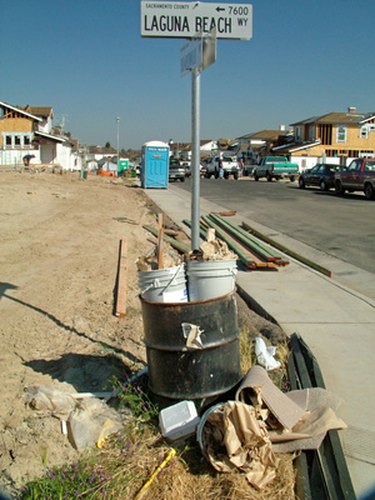
Modern households produce a lot of waste. Many municipalities are increasing their recycling programs, and individuals are becoming more aware of packaging, non-recyclables and other forms of waste, but there is a long way to go. A first step in understanding waste is to understand the various forms that it takes, and the different actions that are required to reduce different kinds of waste.
Organics
Video of the Day
Organics are not really a type of waste but a large variety of materials that are mistakenly identified as waste by people who add them to the waste stream unnecessarily. Anything that is made of organic materials, from food scraps to a pair of wool pants, has no business being in the waste stream or in a landfill. All of these things can be composted, either at home or in municipal composting facilities where available. A large percentage of household "waste" is organic material. This percentage is slowly dropping as the public becomes better educated about the nature of waste, and about the large number of things that can be easily diverted from the waste stream.
Video of the Day
Large Items
While the daily stream of waste from the average household is made up of small and insignificant items, the bulk of waste is greatly increased by huge items that are rarely thrown out but take up a lot of space when they are discarded. Included in this category are mattresses, worn-out furniture, old appliances such as refrigerators and washing machines, and construction waste. Much of this material can be given away to other people or broken down for parts and recyclable materials. The best way to avoid adding furniture and large objects to the waste stream is to buy high quality goods and take care of them. Inexpensive, low-quality furniture spends far more time in the landfill than in the home.
Hazardous Waste
One of the more problematic forms of waste produced in the household is waste that presents a health threat to the environment if it is improperly disposed of. Batteries, solvents, cleaners and paint fall into this category. Waste of this nature needs to be taken to a proper municipal disposal facility, where much of it can be recycled and the rest disposed of in a way that is as harmless as possible to the environment. As in the case of cheap furniture, the best way to avoid the damaging effects of hazardous waste is to avoid buying it in the first place. If people think about waste at the store rather than after something has broken and become trash, they can avoid many problems with expensive and polluting disposal.